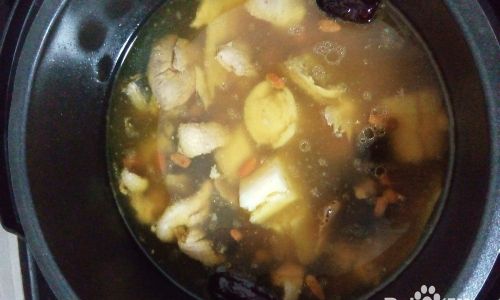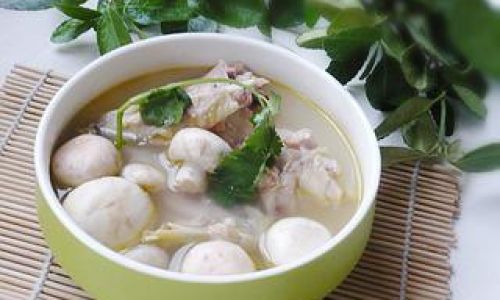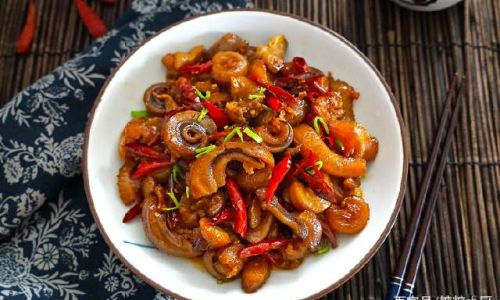Introduction
Chicken soup, a timeless culinary staple, holds a special place in the hearts and kitchens of people worldwide. Its warm, comforting aroma and nourishing qualities make it an ideal choice for soothing sore throats, warming up on cold days, or simply enjoying a hearty meal. While the basic concept of chicken soup may seem straightforward, perfecting the recipe requires attention to detail, understanding of ingredients, and a touch of culinary finesse. This comprehensive guide aims to empower you with the knowledge and skills necessary to craft a delicious, homemade chicken soup that will be cherished by all who taste it.
Section 1: Choosing the Right Ingredients

The foundation of any great chicken soup lies in its ingredients. Here’s a breakdown of what you’ll need and why:
-
Chicken: Opt for a whole chicken or chicken parts such as breasts, thighs, or wings. Free-range or organic chickens offer superior flavor and nutritional benefits. For a richer broth, consider using chicken bones, necks, or feet, which are rich in collagen and gelatin.
-
Vegetables: A blend of carrots, celery, and onions (often referred to as a mirepoix) forms the backbone of the soup’s aroma and flavor. Garlic, parsley, thyme, and bay leaves can also be added for depth.
-
Aromatics: Fresh herbs like rosemary, sage, and peppercorns can elevate the soup’s profile, while a squeeze of lemon juice can brighten its taste.
-
Broth or Water: Chicken broth provides a ready-made base, but homemade stock made from simmering chicken bones and vegetables is even better. If using water, ensure it’s high-quality and filtered to avoid impurities.
-
Seasonings: Salt and pepper are essential, but don’t overlook the potential of adding a pinch of turmeric, paprika, or even a dash of soy sauce for a unique twist.
Section 2: Preparing the Chicken and Vegetables
Before you begin cooking, proper preparation is crucial:
-
Chicken Preparation: Rinse the chicken thoroughly under cold water and pat it dry with paper towels. Remove any excess fat or skin if desired, but note that leaving some on can add richness to the broth. If using bones, crack them slightly to release more flavor.

-
Vegetable Prep: Dice the carrots, celery, and onions into uniform pieces to ensure even cooking. Peel garlic cloves and crush them lightly with the side of a knife.
-
Aromatics and Herbs: Tie fresh herbs and whole spices in a cheesecloth or use a tea ball to easily remove them later. This keeps the soup clear and prevents over-seasoning.
Section 3: Cooking the Soup
Now, let’s dive into the cooking process:
-
Roasting the Chicken (Optional but Recommended): Preheat your oven to 400°F (200°C). Season the chicken with salt, pepper, and your choice of herbs. Place it on a roasting rack or in a baking dish and roast until golden brown, about 30-45 minutes. This step caramelizes the exterior, adding layers of flavor to the broth.
-
Starting the Broth: In a large stockpot, combine the roasted chicken (or raw chicken pieces and bones), vegetables, aromatics, and enough water or broth to cover everything by at least an inch. Bring to a boil over high heat, then reduce to a simmer.
-
Simmering: Simmer the soup gently, uncovered, for at least 2-4 hours. The longer it simmers, the more flavors will meld and the broth will thicken naturally from the gelatin released by the bones. Skim off any foam that rises to the surface during the first hour for a clearer broth.
-
Tasting and Adjusting: After simmering, taste the broth and adjust the seasoning with salt, pepper, and additional herbs as needed. If the soup seems too thin, you can simmer it further or add a slurry of cornstarch and water to thicken it slightly.
-
Finishing Touches: Remove the chicken from the pot and let it cool slightly before shredding or chopping it into bite-sized pieces. Strain the soup through a fine-mesh sieve to remove vegetables and bones, then return the chicken and any desired vegetables (like cooked noodles or diced potatoes) to the pot. Reheat gently before serving.

Section 4: Serving and Enjoying
Chicken soup is versatile and can be enjoyed in various ways:
-
Classic Style: Serve hot, garnished with freshly chopped parsley, a dollop of sour cream, or a sprinkle of chives.
-
Heartier Versions: Add cooked rice, barley, or quinoa for a more filling meal.
-
Creative Twists: Experiment with different herbs and spices, such as curry powder or cumin, for unique flavors.
-
Soup for All Seasons: In summer, serve chilled with a squeeze of lemon and a dollop of yogurt. In winter, warm up with a steaming bowl paired with crusty bread.
Conclusion
Making chicken soup is not just about following a recipe; it’s about creating a dish that embodies love, care, and tradition. By understanding the importance of ingredient selection, meticulous preparation, and patient simmering, you can transform simple ingredients into a soul-warming masterpiece. Whether you’re nurturing a loved one’s health, celebrating a family gathering, or simply indulging in a self-care moment, a homemade chicken soup is always a welcome addition to the table. Happy cooking, and may your soup bring joy and warmth to those who share in it!






0 comments